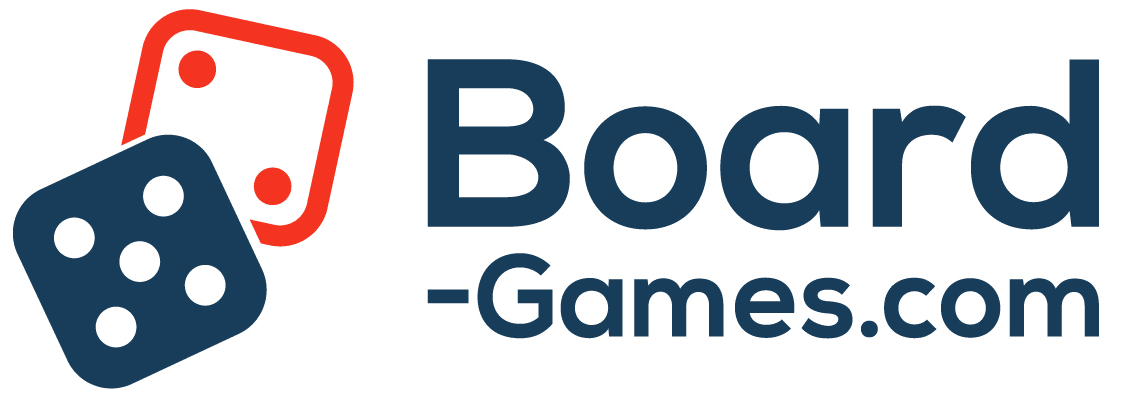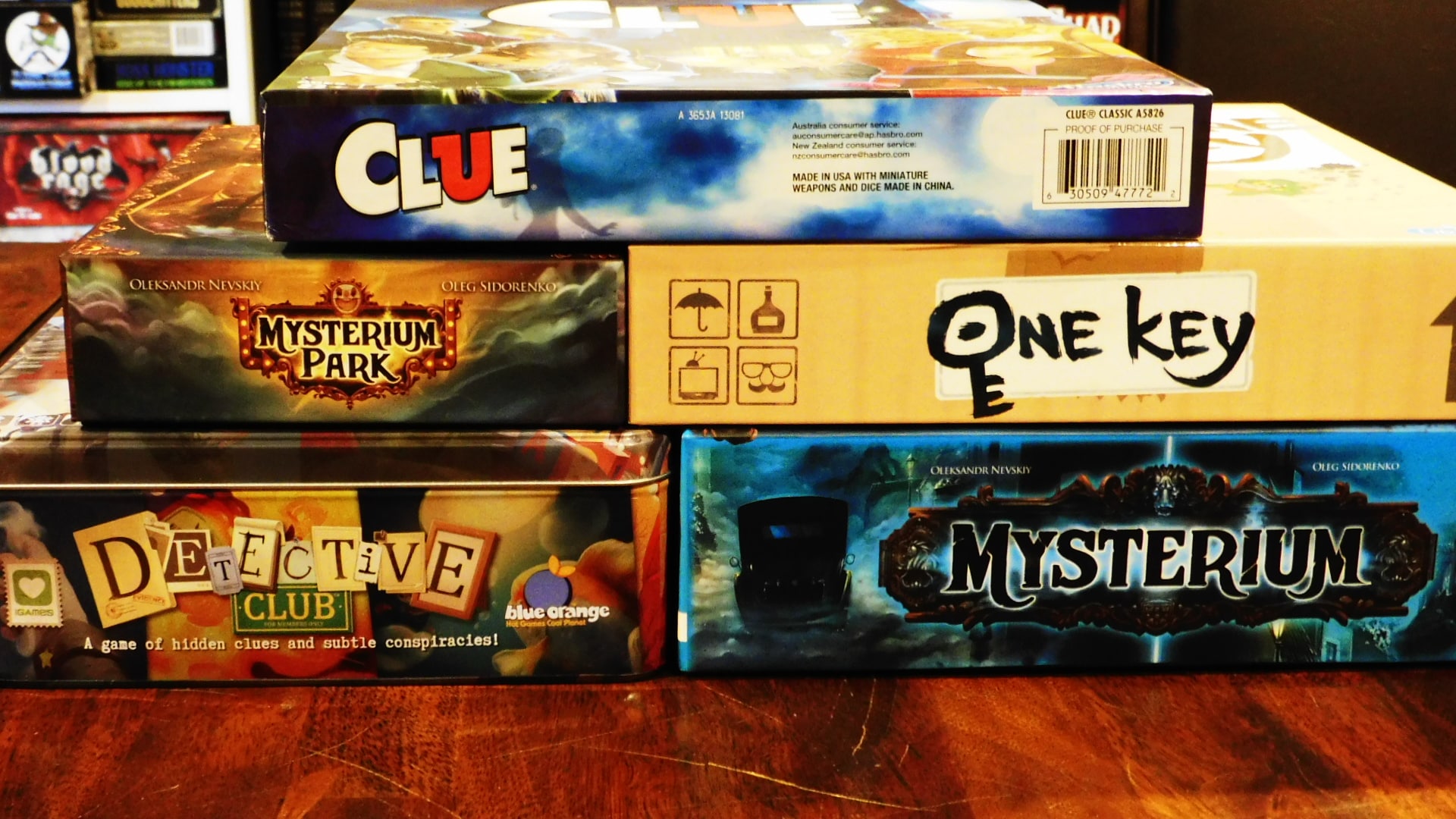If you’re reading this article, it likely means you’ve already played and enjoyed Mysterium, and you’re looking for more. That’s great! To help, I’ve put together this list of 5 games like Mysterium, and I’m hoping you’ll find them to your liking. Here’s what they are.
5 games like Mysterium are Dixit, Detective Club, Mysterium Park, One Key, and Clue. Dixit, Detective Club, and Mysterium Park have tarot-sized carts with similar art, Mysterium Park is a slimmer, faster version of Mysterium, One Key has a similar structure to Mysterium, and Clue is another murder-mystery game.
Table of Contents
A Quick Note
There are many more games similar to Mysterium. In fact, depending on what aspects of Mysterium you focus on, you could have a list of games quite a lot longer than this one.
But there is such a thing as having too many options as well. I’m not saying people couldn’t read through it, but I am saying more doesn’t always equal better. Sometimes it’s better to pare things down.
In short, five games work great for a list of games similar to Mysterium. Any more, and it just gets bloated. However, if you’d like to see more games, then I encourage you to search for them. They’re out there, and you’re sure to find something you love.
5 Games Like Mysterium
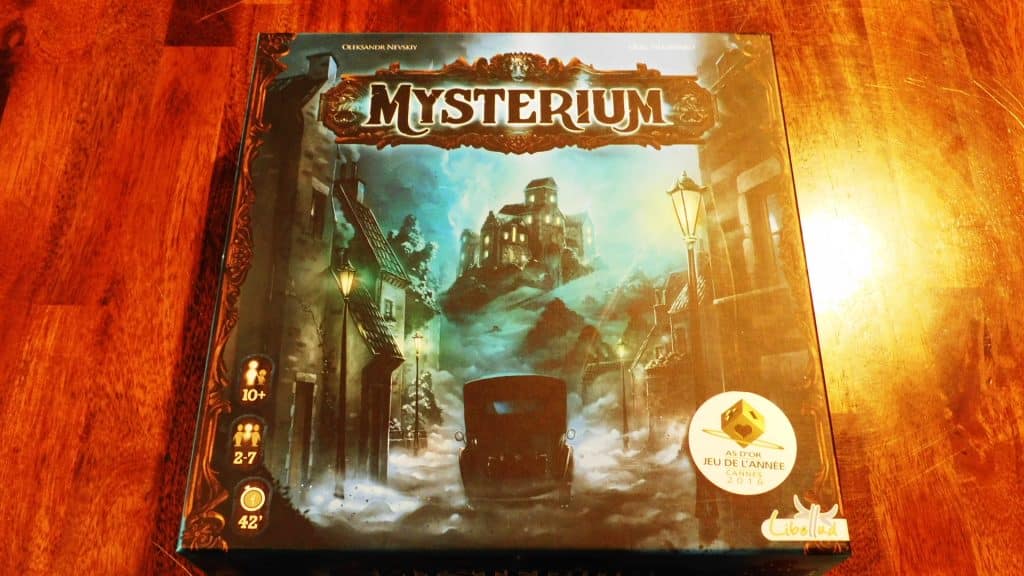
When developing this list of 5 games like Mysterium, I focused on a few things. One was card art. Thankfully, finding games with similar art was easy since Libellud, the game company that makes Mysterium, makes other games with similar art.
Then I started looking at the mechanics and feel of Mysterium, which helped me round out my list. If you like what you see below, please let me know in the comments. I’d love to hear your thoughts on them too. I’d also love to hear your feedback on what games should’ve made the list too.
All that said, let’s kick off the list with Dixit.
Dixit
Dixit immediately came to mind when making this list. In fact, out of all the games on this list (some of which I haven’t played yet…), I owned and played this one first. Coincidentally, it’s the game I thought of first, too. It’s also the game that came before all the others in the same line, including Mysterium!
Back-Of-The-Box Facts About Dixit
- Player Count: 3-8
- Time To Play: 30 minutes
- Age Range: 8 and up
- Difficulty: Beginner/Easy
- Price Range: $30-40
- Release Year: 2008
- Publisher(s): Libellud
- Designer(s): Jean-Louis Roubira
- Artist(s): Marie Cardouat
- Where To Buy: Amazon
A Quick Overview Of Dixit
Dixit is Latin for “he/she said.” As a side note, I was looking for a more inclusive version of “dixit” and discovered “dixerunt.” It’s an ugly-sounding word, but it means “they said,” so there we go.
Now, Dixit is a game about rabbits racing. No, seriously! Whichever rabbit gets 30 points first wins. To score those points, players play cards with a similar size and style of art to Mysterium.
Dixit is played in rounds, and every round sees players with a hand of six cards. Each of those rounds sees one player as the Storyteller. The Storyteller secretly picks one of their cards, says one sentence about it, then puts it facedown in front of them. The sentence can be one word or even a sound; it’s up to the Storyteller.
The other players pick a card from their hands as well, aiming for a card that could be the one the sentence is describing. They put these cards facedown, the Storyteller shuffles them all together, then lays them out face up.
All players except the Storyteller vote, doing so in secret with one of their Voting Tokens. When they reveal them, depending on the vote, all sorts of things can happen. The Storyteller can get points, other players can get points, and so on. What’s really intriguing is to get points, the Storyteller actually doesn’t want everyone to guess correctly.
Overall, it’s a great game that’s fast, easy, and fun.
Similarities To Mysterium
The most obvious similarity between these two is the art. Dixit is the progenitor for games like Mysterium and others on this list too.
How the cards are used is another similarity between the two. Unlike Mysterium, the person playing the cards in Dixit can speak, but what they say still leaves a lot of room for interpretation.
Players also still have to make choices based on the information they have, sometimes choosing right and sometimes choosing wrong.
Differences To Mysterium
Dixit is a faster game than Mysterium. It’s also a lot simpler. I wouldn’t call Mysterium complex, but it is a step above Dixit in that regard.
In addition, Dixit only has one phase, while Mysterium has two. Plus, Mysterium is fully cooperative, whereas Dixit is fully competitive.
Also, Dixit has more expansions for those looking for extra content, while Mysterium only has two.
Who Would Like Dixit?
Families and casual gamers. The game does not require deep thought or heavy strategy, so I don’t think it would appeal to hardcore gamers. However, for families or players looking for something light and fun, this game is perfect.
Detective Club
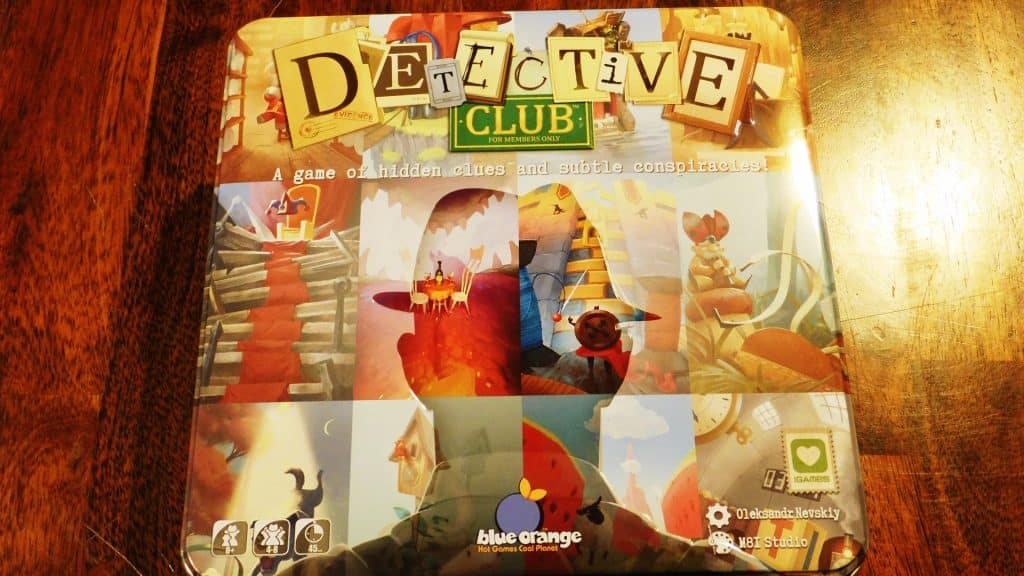
I was immediately intrigued by Detective Club when I first saw it years ago (I think this was right when it came out in 2018). I didn’t buy it right away, but a few years later, in 2022, I saw a game group playing through it in a video.
And I knew right then and there that I wanted the game. I have yet to play it, but at least I have it for when the opportunity presents itself.
Back-Of-The-Box Facts About Detective Club
- Player Count: 4-8
- Time To Play: 30 minutes to 1 hour
- Age Range: 8 and up
- Difficulty: Beginner/Easy
- Price Range: $30-40
- Release Year: 2018
- Publisher(s): Libellud
- Designer(s): Oleksandr Nevskiy
- Artist(s): M81 Studio
- Where To Buy: Noble Knight Games
A Quick Overview Of Detective Club
Detective Club plays one or two rounds, depending on how many players there are (one round for six to eight players and two rounds for less than six). The player with the most Victory Point Tokens, also called VP Tokens, at the end of the game wins.
Each turn, one player is the Active Player. That player looks at the cards in their hand, then picks a single word they think is a good clue for the card. They write that word secretly on enough notebooks, so all players have one (except for one player who will have a notebook without the word on it; they are called the Conspirator). The Active Player shuffles those notebooks and passes them out. Players look at them in secret.
All players are going to play two cards, starting with the player to the left of the Active Player and going clockwise. Each player plays one card, then everyone else, including the Active Player, plays one, then they all play their second card.
Afterward, each player, starting with the Active Player, describes how their cards fit the word, which the Active Player also says aloud.
Next, all players except the Active Player, starting with the player to their left and going clockwise, vote. To do so, they place their Voting Tokens next to the Player Marker of the player they think is the Conspirator. If they’re right, they score three points at the end of that turn. If they’re wrong, there’s no penalty. And if one or fewer players vote for the Conspirator, they get five points, and the Active Player gets four. Otherwise, they get none.
Similarities To Mysterium
The first similarity is the same as with Dixit: the cards. They’re the same size, and they use the same style of art.
Also, there’s an element of “one separate from all” in Detective Club, although I guess it’s closer to “two separate from all.” This aspect of gameplay is present in Mysterium as well since the Ghost, while working with the Psychics, is separate from them in many ways. This is even literally true with the Game Screen.
In addition, both games feature higher player counts. Mysterium comes in at seven, and Detective Club comes in at eight. Because of this, and because of their mechanics, both games are also great choices for party games.
Differences To Mysterium
Detective Club has less of a theme than Mysterium does. You’re not going to feel like a detective or even like you’re part of a club while playing Detective Club.
Now, while you won’t truly feel like a Psychic or a Ghost while playing Mysterium, you will feel like you’re partaking in something spooky. The art, the components, the fact the Ghost can’t talk…it all adds up to an experience that feels like it belongs in Mysterium.
Plus, the Psychics are interpreting the Visions the Ghost gives them, so in a way, they might feel like Psychics.
Also, Mysterium sees everyone working together, while Detective Club sees everyone working for themselves.
Detective Club is also a faster game than Mysterium and one that fits in the party niche better. In fact, even though I haven’t played it yet, from what I do know about Detective Club, I’d argue you could play it more frequently than Mysterium too.
Who Would Like Detective Club?
Anyone looking for a fun party game would enjoy Detective Club. This is a game that will require people to be creative and lie on the spot, though, too, so try to play with people who are okay and good at this. Alternatively, play with people who are bad at this but who have a lot of fun with being bad at it.
Either way, get a crowd and go to town. I would not recommend this game for younger kids, though. It might be hard for them to grasp how to approach this game. Even though many kids can and do lie, there’s a certain art to it here that might be beyond them.
Mysterium Park

Mysterium Park may best be described as Mysterium-lite in a circus. I bought it (have yet to play this one either…) based on that idea and because I wanted more Mysterium in my life.
Also, interestingly, it takes place in a town called Derry. I’m curious about that name choice since, in case you don’t know, it’s also the name of the town where It takes place.
Out of all the games on this list, Mysterium Park naturally has the most similarities with Mysterium. They do share a similar name, after all, and Mysterium Park was, in part, designed as a simpler and faster version of Mysterium.
With that said, here’s a quick overview of how it plays.
Back-Of-The-Box Facts About Mysterium Park
- Player Count: 2-6
- Time To Play: 30 minutes to 1 hour
- Age Range: 10 and up
- Difficulty: Beginner/Easy
- Price Range: $20-30
- Release Year: 2020
- Publisher(s): Libellud
- Designer(s): Oleksandr Nevskiy and Oleg Sidorenko
- Artist(s): Xavier Collette and M81 Studio
- Where To Buy: Amazon
A Quick Overview Of Mysterium Park
Mysterium Park sees two to six players doing many of the same things they would do in Mysterium. One player is the Ghost, and the other players are the Psychics. The Ghost Player cannot talk or communicate in any way other than to give the Psychics Vision Cards.
However, unlike Mysterium, players only have six turns to finish Phase 1. Within that phase, they must eliminate Suspects and Locations. There are no Objects in Mysterium Park.
In short, the Ghost Player again knows which Suspects and Locations are assigned to which Psychics. The Ghost Player can give those Psychics as many Vision Cards as they need in order to help them guess the correct Suspects and Locations. As the Psychics guess correctly, they remove those Suspects and Locations from the board. The ones left over are used at the end of the game. As with Mysterium, the Ghost provides the Psychics with a Shared Vision that they discuss and vote on together. If they’re right, they all win! If not, they all lose.
Similarities To Mysterium
Aside from the name, Mysterium and Mysterium Park share many of the same elements. They both have Ghosts, Psychics, Suspects, Locations, Vision Cards, a Phase 1 and a Phase 2 (although technically Mysterium Park breaks the phases up into what they call Rounds 1, 2, and 3), Crystal Balls (what the game calls Intuition Tokens), similar themes, and art.
Basically, they’re very, very similar!
Differences To Mysterium
Mysterium Park truly does feel like a faster, slimmer, and easier version of Mysterium. It has no timer, no difficulty modes, no Clairvoyancy Tracker or Track, no Objects, and fewer components overall.
It even lets Psychics talk during the vote at the end of the game, which is something I think is a great variant idea! At the end of the game, there are also fewer choices for the Psychics to make.
Overall, both games are great (or seem great), but Mysterium Park sets out to accomplish something, and that’s exactly what it seems to do.
Who Would Like Mysterium Park?
Mysterium’s the kind of game you play if you have a bigger gathering or if you’re looking for a more immersive experience. Mysterium Park is still a great experience (at least as far as I know without having played it yet), but Mysterium feels like a more deluxe version of that experience. Where Mysterium Park shines is in its faster, simpler gameplay. If that’s what you’re looking for, then you’ll find a great game here.
One Key
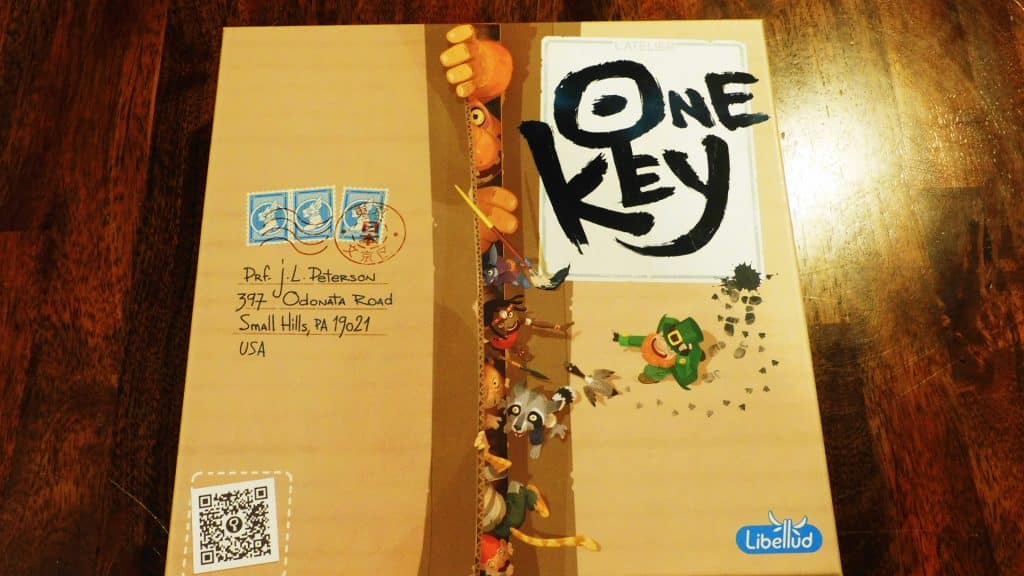
I bought One Key based on the art and style. Maybe that was a poor choice, but I don’t think so. Although, admittedly, I have yet to play it, haha.
Still, I like the way the game looks and the feel of it. I’m excited to give it a go one day.
Back-Of-The-Box Facts About One Key
- Player Count: 2-6
- Time To Play: 30 minutes
- Age Range: 8 and up
- Difficulty: Beginner/Easy
- Price Range: $15-20
- Release Year: 2019
- Publisher(s): Libellud
- Designer(s): L’Atelier
- Artist(s): Xavier Gueniffey Durin
- Where To Buy: Amazon
A Quick Overview Of One Key
One Key has an app (Google Play, Apple, although you don’t have to use it.
All players either win or lose together. During the game, one player is the Leader while the others are the Travelers. The goal is to NOT remove the card that has the correct number key on the back of it.
The Unique Cards
Let’s get some things out of the way first before going further. The cards in One Key are cards, and they’re also uniquely shaped to whatever’s on the card. I’m not sure why Libellud did this though. Maybe they were trying to make them stand out more, or maybe it was a stylistic choice to help the game stand out. Either way, I like it a lot, and I think it works.
Also, the number key really is just a number. The back of every card has one, and the Leader secretly determines the One Key at the beginning of the game. They do this by randomly drawing 11 cards from the deck, randomly picking one from that, then writing it down or putting it in the app. They shuffle those 11 cards, then place them out in the center of the table, each of them spread out and face up.
Each Turn
Every turn starts with a timer, which lasts three minutes. What the Travelers and the Leader do they do simultaneously. If they fail to complete their actions before the timer runs out, they lose.
However, turn one of the game is different from the other turns. That’s because the leader draws a card (they’re called Clue Cards) from the stack. They decide if the card has a Strong Link, Slight Link, or Weak Link to the One Key. Depending on their choice, they place that card above either the Green Clue Tile (Strong Links), Yellow Clue Tile (Slight Links), or the Red Clue Tile (Weak Links).
Now, the Travelers get to talk about why they think the Leader put that card there. The Leader can’t talk to them at all during this time. In fact, they’ll be busy with something anyway, which we’ll get to in a moment.
While talking, the Travelers can and should organize the Clue Cards in the center of the table (called Exploration Cards) so that the cards they think have a Strong Link are below the Green Clue Tile, and so on for the cards with a Slight Link and Weak Link.
Also, at the end of a turn, they have to remove one of the Exploration Cards. If it has the One Key on it, everyone loses.
While they’re doing this, the Leader is drawing three more Clue Cards and, in secret, decides how strong of a link they have to the One Key, place them behind the screen, and put tokens in front of them indicating the strength of that link to the Travelers. The Travelers will get to see this information and pick one to help them deduce the One Key on the next turn.
Success?
So long as everyone has completed their tasks in time, they move to the next turn. On turns two, three, and four, the Leader turns the screen around, the Travelers pick a card they want, then everything else is the same.
So long as they haven’t removed the One Key by the end of turn four, everyone wins!
Similarities To Mysterium
From the start, One Key has several similarities with Mysterium. Both have a Leader or a Ghost Player, both of which can’t talk, and both of which provide information to the other players via cards.
The art in One Key is less surreal, but it’s still beautiful and incredible to study.
Both games are fully cooperative, and both are easy to teach and understand. Both also follow a similar turn structure, with the Leader or Ghost providing the other players with information, which those players then discuss and make decisions about, ultimately doing so successfully or unsuccessfully.
And both games also have a timed element.
Differences To Mysterium
One Key is much faster than Mysterium. Rarely will a game of Mysterium only last four rounds, while One Key can only last four rounds if that.
While both games are easy to teach and understand, I’d say One Key is the easiest between it and Mysterium.
Also, One Key has a dedicated app!
Lastly, One Key has a lighter, brighter feel, whereas Mysterium is darker.
Who Would Like One Key?
Anyone who enjoys Mysterium but wants something lighter in both mechanics and style will like One Key. I think this is a game that could work well with kids too, and the box even says it works with ages eight and up. Hopefully, that’s true because this game has great art and feel that works so well in family-friendly games.
Clue
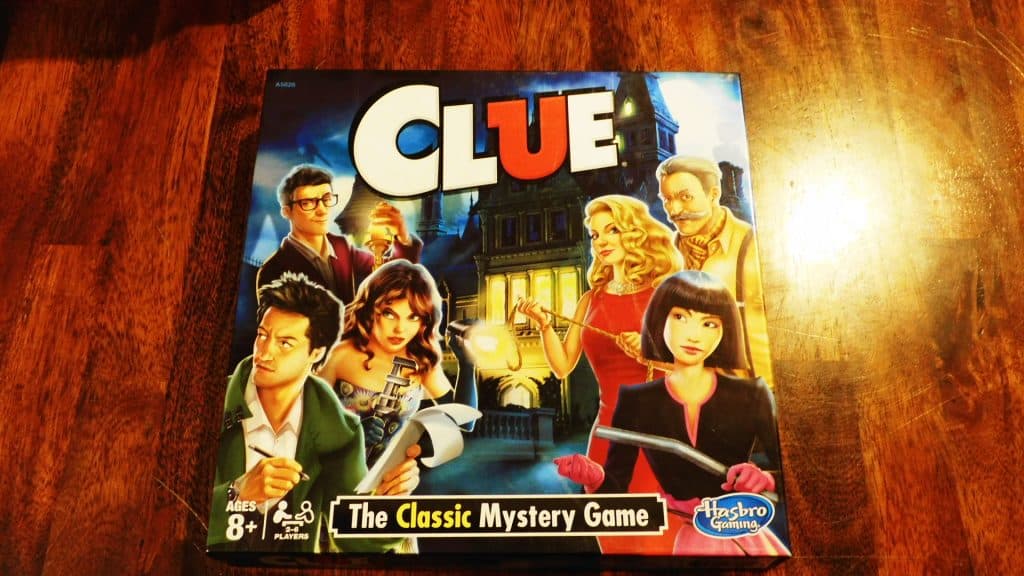
I had to think for a bit if I wanted to include Clue on this list. Before writing this list of 5 games like Mysterium, I’ve written over 30 pieces about Clue. I’m not saying that is a bad thing, but I do need to acknowledge it as a fact. And the reason I had to consider if I wanted to include Clue on this list was that I didn’t want people to think I was including it just to write another piece about Clue.
Sure, it doesn’t hurt to do so, but Clue is pretty similar to Mysterium. I think playing Clue serves as a great launching point for playing Mysterium.
Back-Of-The-Box Facts About Clue
- Player Count: 2-6
- Time To Play: 30 minutes to 1 hour
- Age Range: 8 and up
- Difficulty: Beginner/Easy
- Price Range: $10-$20
- Release Year: 2018
- Publisher(s): Hasbro
- Designer(s): Unknown
- Artist(s): Unknown
A Quick Overview Of Clue
If you haven’t played Clue or heard of it, here’s a quick primer. Clue sees two to six guests trying to solve a murder mystery at a mansion. Players will roll dice to move and try to get into rooms so they can make guesses as to who killed the host, where, and with what weapon.
Other players have the chance to disprove their guesses by secretly giving them cards that show they’re wrong.
At any point on their turn, even after making a guess (called a Deduction), if a player thinks they know the solution, they can make an official guess (called an Accusation). To see if they’re right, they secretly look at the three cards in the Case File Envelope. And if they’re right, they win. If not, they lose. The other players keep playing until someone guesses right or everyone is wrong.
And that’s it! That’s Clue.
Similarities To Mysterium
Clue and Mysterium both revolve around solving a murder mystery. While in Clue, there are no ghosts, both involve a group of people showing up to an isolated mansion to figure out how someone was killed.
Similarly, both also see players figuring out the Suspect, Location (Room), and Object (Weapon) used to kill that person.
Both games are about using the information available to you to make educated guesses. These guesses result in either a yes or no type of situation, which gives the players more information.
Both games have a Gothic or Victorian vibe. Both should only be played every so often, and both are best played in dimly lit rooms with background music and at certain times of the year, such as Halloween.
In short, there are a lot of similarities between Clue and Mysterium.
Differences To Mysterium
Mysterium has no movement mechanic, unlike Clue, which has a roll-and-move mechanic.
In Mysterium, the players making guesses about the murder mystery have little to no information about it beforehand. They’re also guessing each part of the mystery one at a time, starting with the Suspects, then the Locations, then the Objects.
In Clue, players have a decent amount of information about the murder mystery beforehand, courtesy of the cards they were given at the start of the game. Also, they guess the entire mystery at once, Suspect, Room, and Weapon.
In Mysterium, one player gives clues to the other players in the form of Vision Cards. In Clue, players give the cards to each other, and there’s no interpretation involved. The cards clearly state the information they’re giving the players.
Clue can also end in as little as one turn, whereas Mysterium would take at least four (three for everyone to guess correctly and then one for Phase 2).
Mysterium tends to have a higher production value than Clue as well.
Who Would Like Clue?
If you’ve played Mysterium and are looking for something a little simpler or a little more classic, then I recommend Clue. While Clue is limited in many ways compared to many of the murder mystery games that have come after, including Mysterium, it’s still enjoyable even now in 2023. I especially think Clue is great for families or the elderly, whereas Mysterium might not be.
Did You Know?
(Each time you refresh the page you will get a new “Did You Know” fact!)
Did you know that there are a whole bunch of mystery games that are similar to Clue? Imagine! We take a look at them over here.
Conclusion: 5 Games Like Mysterium
As I mentioned earlier, there are so many more games like Mysterium I could make dozens of these lists. That’s one of the great parts of our hobby: the fact that if you like something, you can find something else similar to that experience.
With that in mind, I’d love to hear your recommendations for games like Mysterium. What do you think about mine? Let me know in the comments below!
And, as always, keep on gaming, fellow board gamers.
